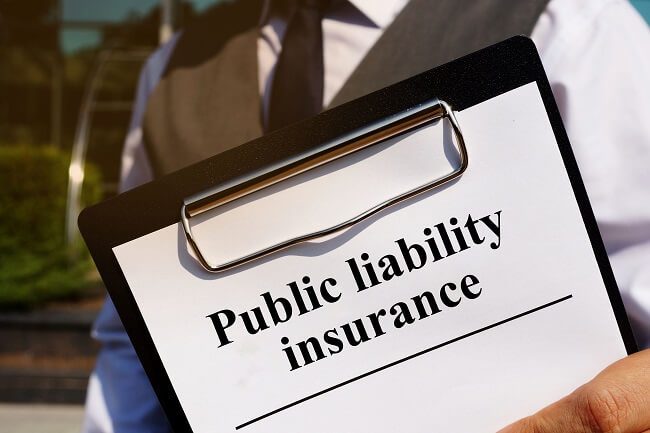How to Get Public Liability Insurance In 2024 | An Expert Guide
Public liability insurance is a vital safeguard for individuals and businesses. It offers protection in the event of injury or property damage claims made by third parties. Whether you’re a business owner, contractor, or event organizer, having public liability insurance can provide financial security and peace of mind. In this guide, we’ll walk you through the process of obtaining public liability insurance, ensuring you understand the steps involved.
Contents
Introduction to Public Liability Insurance
Public liability insurance, often known as PLI, is a type of coverage that protects you against legal liability for injuries or property damage to third parties. These third parties can include clients, customers, visitors, or anyone affected by your business or activities. The insurance typically covers legal expenses and compensation costs associated with third-party claims.
Though public liability insurance is not mandatory in many places, it is highly recommended for those engaged in activities involving the public. Without this coverage, you could be personally responsible for the financial burdens of legal claims, which can be devastating.
Assessing Your Insurance Needs
Before you begin the process of acquiring public liability insurance, it’s essential to assess your specific insurance needs. Consider the following factors:
Business Type
The nature of your business or personal activities will dictate the level of coverage required. For instance, a construction company may need higher coverage limits compared to a small retail store.
Industry Requirements
Some industries have specific regulations regarding the amount of public liability insurance you must have. Healthcare providers, for example, often need substantial coverage due to the elevated risks in their field.
Risk Assessment
Evaluate the risks associated with your activities. If you are involved in high-risk work, such as roofing or tree removal, you may require more extensive coverage to account for potential accidents.
Budget
Determine your financial capabilities to decide how much you can afford in insurance premiums. Balance your coverage needs with your budget.
Finding the Right Insurance Provider
Once you’ve determined your insurance needs, it’s time to find a reputable insurance provider. Here are several methods to help you locate potential insurers:

Local Insurance Brokers: Consider engaging local insurance brokers with knowledge of the insurance landscape in your area. They can provide personalized advice and connect you with suitable providers.
Online Insurance Marketplaces: Many online platforms allow you to compare insurance quotes from various providers. Websites like Insureon and PolicyBee are useful tools for gathering multiple quotes at once.
Recommendations: Seek recommendations from colleagues, friends, or business associations. They may have experience with insurers who cater to your industry or needs.
Professional Associations: If you belong to a professional organization or association, inquire about any insurance partnerships they offer. These partnerships can sometimes provide discounts and tailored coverage.
Comparing Insurance Quotes
Once you have a list of potential insurance providers, it’s crucial to compare their quotes. Here’s how to do it effectively:
Coverage Limits: Compare the coverage limits offered by different insurers to ensure they align with your needs and budget.
Premium Costs: Assess the annual premium costs for each quote and how they fit into your financial plan.
Deductibles: Evaluate the deductibles associated with each policy. A higher deductible may lead to lower premiums, but it also means you’ll pay more out of pocket in the event of a claim.
Policy Inclusions: Carefully review what is covered by each policy. Some policies may include additional features, such as legal expenses coverage or product liability insurance.
Exclusions: Pay attention to policy exclusions, which specify situations or activities not covered. Ensure that the exclusions are acceptable to your needs.
Customer Service: Research the reputation of the insurance providers in terms of customer service, claims processing, and responsiveness.
The Application Process
After comparing quotes and selecting an insurance provider, it’s time to initiate the application process. Follow these general steps:
Complete the Application: Fill out the application form provided by the insurance company. Be accurate and honest in your responses, as any discrepancies can lead to issues during the claims process.
Provide Documentation: The insurer may require supporting documentation, such as business records, financial statements, or details about your operations. Have these documents ready.
Underwriting Process: The insurance company will assess your risk profile based on the information you provide and may run background checks.
Acceptance or Rejection: Once the underwriting process is complete, the insurance provider will either accept your application and offer a policy or reject it. If accepted, you’ll receive a policy proposal.
Reviewing and Finalizing the Policy
Before finalizing the policy, take the following steps to ensure it aligns with your needs:
Review Policy Terms: Carefully read through the terms and conditions of the policy to ensure it accurately reflects the coverage you require.
Ask Questions: If any aspects of the policy are unclear, don’t hesitate to ask questions. Clarify any doubts with the insurance provider or your insurance broker.
Amendments and Endorsements: Discuss potential amendments or endorsements to tailor the policy to your specific requirements, if necessary.
Premium Payment: Determine the premium payment schedule and method. Make sure you understand how and when to pay your premiums.
Policy Documentation: Once you are satisfied with the policy terms, request and retain a copy of all policy documents for your records.
Frequently Asked Questions
How much is public liability insurance?
The cost of public liability insurance can vary significantly depending on several factors, including the type of business or activities, coverage limits, location, and any additional features or endorsements. On average, small businesses might pay a few hundred to a few thousand dollars annually for this insurance. It’s best to obtain quotes from insurance providers to get a more accurate estimate tailored to your specific needs and circumstances.
Is public liability insurance worth it?
Yes, public liability insurance is often worth the investment, especially for businesses or individuals who interact with the public. It provides essential protection by covering legal expenses and compensation costs in the event of third-party injury or property damage claims. Without it, you risk personal financial liability, which can be financially devastating. Public liability insurance not only offers legal protection but also enhances your business’s credibility and provides peace of mind.
Is public liability the same as insurance?
Public liability is a type of insurance. It specifically deals with the liability of individuals or businesses for injury or property damage to third parties. It is a subset of general liability insurance, which covers a broader range of liabilities, including injuries to employees, product liability, and more. So, public liability insurance is a specific form of insurance that falls under the larger umbrella of general liability insurance.
Why do I need public liability insurance?
Public liability insurance is crucial for individuals and businesses. It provides financial protection if you’re held responsible for injury or damage to third parties while on your property or during your business activities. It covers legal expenses, medical bills, and compensation, ensuring you’re not financially burdened by unexpected accidents.
What is my public liability?
“Your public liability” typically refers to the limit of coverage provided by your public liability insurance policy. This limit is the maximum amount the insurance company will pay for claims arising from third-party injuries or property damage. It’s important to choose a coverage limit that adequately protects your assets and potential liabilities.
Conclusion
Public liability insurance is a crucial tool for protecting your financial well-being and business operations. By understanding what public liability insurance is, why it’s important, and following the steps outlined in this guide, you can secure the coverage you need to safeguard your interests and assets..







